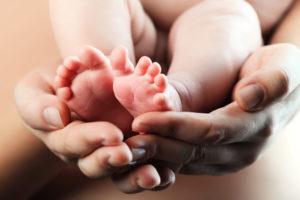 Remember how Nemo hated his smaller right fin because he looks different from the others? But Marlin, his father, assured him that he would never let anything bad happen to Nemo. You have probably heard that every child is a gift. What if your gift comes out a little bit different? How do you deal with it? Being a parent is a challenging role, you wish children could come with a manual attached to them, but no they don’t.
Remember how Nemo hated his smaller right fin because he looks different from the others? But Marlin, his father, assured him that he would never let anything bad happen to Nemo. You have probably heard that every child is a gift. What if your gift comes out a little bit different? How do you deal with it? Being a parent is a challenging role, you wish children could come with a manual attached to them, but no they don’t.
But do not fret; this world has some superheroes in it, like your in-laws, friends, and this guide by experts offering craniofacial training programs.
Cranio..what?
There have been a lot of newborn issues throughout the years. Some disorders are genetic in nature, while some are yet to be determined. Craniofacial issues affec about 7,100 infants in the United States each year. About 4,400 infants were born with cleft lip (with or without cleft palate), while 2,700 babies were born with cleft palate alone.
Craniofacial is a defect that affects the structure of the infant’s face and/or head. It can be caused by the abnormal growth of the skull or face that involves soft tissues and bones. Simply put, an infant with craniofacial issue may suffer physical disfigurement, making him/her look different from the other babies. Of course, these babies have yet to know that they have these issues, but the parents are their first shield of care and protection.
Parenting does not come as easy as a nursery rhyme for parents of children suffering from craniofacial defects. Parents have to deal with enormous amount of stress and confusion. Emotions are high and are all over the place. No parent wished for this kind of condition for their child, thus feeling of grief and disbelief are some of the initial reactions of parents dealing with this kind of situation. Feeding communication is challenging for infants and their parents, sometimes it results to slow weight gain and growth progress. There is a learning curve for parents feeding their children with craniofacial disorder. Luckily, parents don’t have to deal with this challenge alone, aside from the family support, there are medical centers and foundations that offer craniofacial training programs to help parents work their way around.
It’s not a dead end
Parenting can be stressful, especially if their child needs extra care and attention. One may question their ability to raise a child thus the feeling of detachment to their kid. But as a parent, you must make a mental note, that you play a big part in shaping your child’s perspective and self-esteem.
Craniofacial issues are not a dead-end, it has solutions. There are craniofacial training programs that parents can avail to aid them in dealing with their problems. Your gift is so unique and beautiful, accept and embrace it. Your unconditional love fills in the gaps of every defect.

